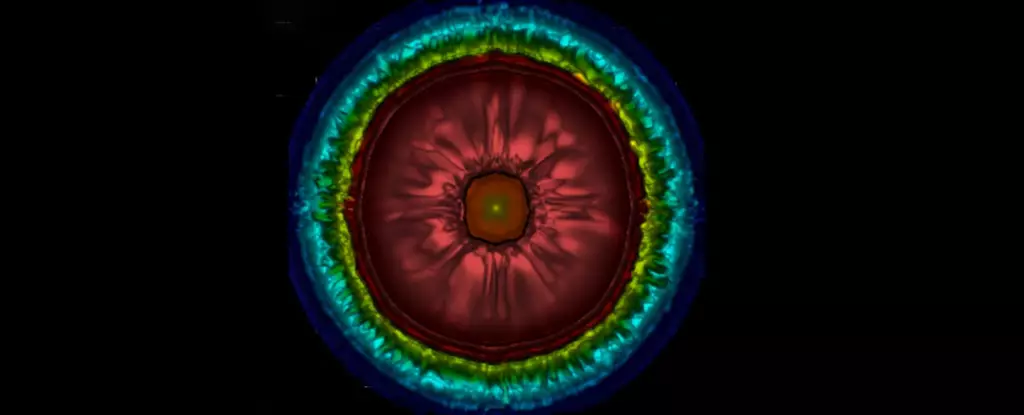The Universe is an ever-changing and mysterious place, filled with celestial phenomena that continue to baffle scientists and astronomers. One such phenomenon is the explosion of massive stars known as supernovae. While these stellar explosions have been extensively studied and understood to a certain degree, there exists a category of supernovae that defy conventional knowledge – the exotic supernovae. With their incredible luminosity and long durations, these enigmatic explosions have become the focus of intense research and simulations using state-of-the-art supercomputers. In this article, we delve into the world of exotic supernovae, exploring the unprecedented insights gained from the first-ever high-definition 3D hydrodynamic simulation of these captivating events.
For years, scientists have taken great strides in comprehending the nature of supernovae, painting a comprehensive picture of their intrinsic brightness and the processes driving their explosions. However, recent advancements in observational capabilities have uncovered an exceptional class of cosmic explosions that challenge previous theories and understanding. These exotic supernovae emit luminosities tens to hundreds of times greater than ordinary supernovae, with some maintaining their brightness for several years or longer. Furthermore, some exhibit irregular variations in brightness, adding to their mysterious nature. To unveil the secrets hidden within these rare events, scientists are turning to cutting-edge simulations and computational models.
Traditionally, supernova simulations have been limited to one-dimensional models, hampering the ability to capture the complex dynamics and turbulent structures within these explosive phenomena. However, a breakthrough has been achieved through the collaboration of international researchers led by Ke-Jung Chen at the Academia Sinica Institute of Astronomy and Astrophysics (ASIAA) in Taiwan. Leveraging the power of supercomputers at the Lawrence Berkeley National Laboratory and the National Astronomical Observatory of Japan, they embarked on a momentous endeavor – the first-ever high-definition, 3D hydrodynamic simulation of exotic supernovae.
The key to understanding the behavior of exotic supernovae lies in unraveling the intricate relationship between turbulence and the overall explosion. Turbulence, characterized by irregular fluid motion, plays a critical role in shaping the structure and brightness of a supernova. The team’s simulation revealed the profound impact of turbulent structures on the release and transfer of energy within the explosion, ultimately influencing its overall appearance and luminosity. This breakthrough provides scientists with invaluable insights into the complex dynamics at play during these extraordinary events.
While the high-definition simulation marks a significant milestone in the study of exotic supernovae, the quest for knowledge does not end here. With the advent of next-generation supernova survey projects, such as the Vera Rubin Telescope in Chile and wide-field near-infrared missions like the Nancy Grace Roman Space Telescope and Euclid, it is expected that more of these captivating events will be detected. The heightened sensitivity and capabilities of these future observatories necessitate further research and modeling to enhance our understanding of exotic supernovae and the evolution of massive stars in the Universe.
In the vast expanse of the Universe, exotic supernovae stand as beacons of mystery and wonder. Through the tireless efforts of scientists and groundbreaking simulations, we are beginning to shed light on these rare cosmic explosions. The first-ever high-definition, 3D hydrodynamic simulation of exotic supernovae represents a pivotal moment in our understanding of the most massive stars in the Universe and the forces that drive their explosive deaths. As we delve deeper into the secrets of the Universe, we are humbled by its complexity and inspired by the limitless possibilities that lie ahead.


Leave a Reply